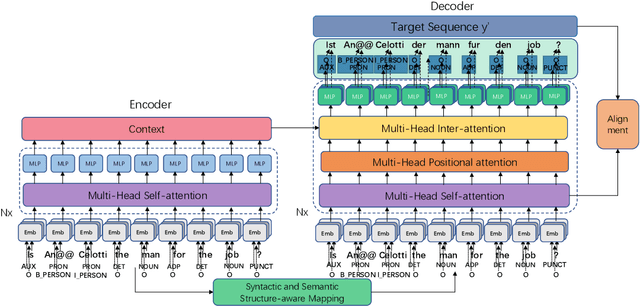Enriching Non-Autoregressive Transformer with Syntactic and SemanticStructures for Neural Machine Translation
Paper and Code
Jan 22, 2021



The non-autoregressive models have boosted the efficiency of neural machine translation through parallelized decoding at the cost of effectiveness when comparing with the autoregressive counterparts. In this paper, we claim that the syntactic and semantic structures among natural language are critical for non-autoregressive machine translation and can further improve the performance. However, these structures are rarely considered in the existing non-autoregressive models. Inspired by this intuition, we propose to incorporate the explicit syntactic and semantic structures of languages into a non-autoregressive Transformer, for the task of neural machine translation. Moreover, we also consider the intermediate latent alignment within target sentences to better learn the long-term token dependencies. Experimental results on two real-world datasets (i.e., WMT14 En-De and WMT16 En-Ro) show that our model achieves a significantly faster speed, as well as keeps the translation quality when compared with several state-of-the-art non-autoregressive models.
 Add to Chrome
Add to Chrome Add to Firefox
Add to Firefox Add to Edge
Add to Edge